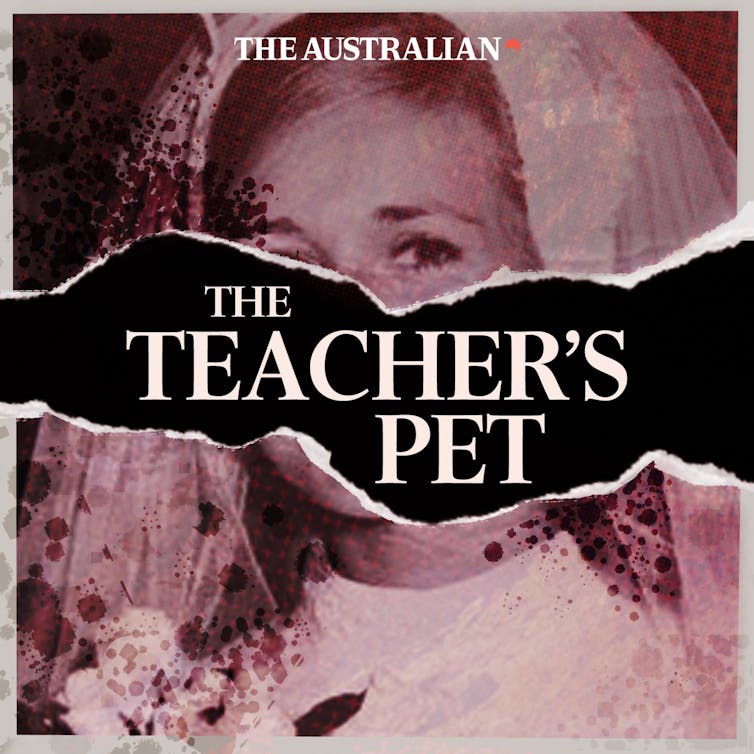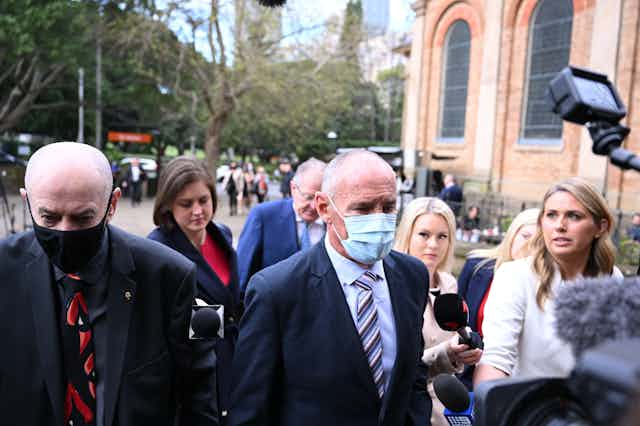Listeners of the true crime podcast Teacher’s Pet were vindicated last Tuesday when 74-year-old Chris Dawson was found guilty of murdering his wife Lynette in Sydney nearly 40 years ago.
Dawson was convicted based on overwhelming circumstantial evidence in a judge-only trial.
The publicity brought about by the podcast is widely seen as the catalyst to Dawson’s conviction. While Dawson’s conviction may seem like a win for investigative journalism, it remains unclear whether true crime entertainment – from podcasts to Netflix specials – can regularly play a tangible role in achieving justice.

Prosecutions aren’t easy
While pop culture can shift public perceptions, often flipping the original heroes and villains of criminal cases on their head, true crime content can reflect naivety about how the public can assist investigations and influence the outcomes of criminal cases.
Criminal investigations are slow, complex processes focused on identifying suspects and building a brief of evidence, hopefully proving guilt beyond reasonable doubt in the courtroom. While most criminal cases in Australia resolve with a finding of guilt, this is largely because most defendants plead guilty.
Even when a matter makes it to trial, prosecutors are constrained by rules of evidence, the availability of witnesses and the (justifiably) high standard of proof for a finding of guilt – beyond reasonable doubt.
True crime entertainment has the luxury of ignoring the hearsay rule, the restrictions placed on mentioning criminal history and the heavy scrutiny of “experts” who assert they have specialised knowledge to assist the case. They also don’t need to meet the evidentiary and legal thresholds of a criminal trial.
Fans of the podcast Up and Vanished experienced this disconnect firsthand when the main suspect in the show’s first season, Ryan Duke, was found not guilty for the cold-case murder of Tara Grinstead. Podcast host Payne Lyndsey expressed shock and disappointment when Duke was found not guilty of five of six counts related to the death, describing the state’s case as “weak as shit” likely because it couldn’t follow the narrative form of his podcast.
But podcasters and television producers should have some humility regarding criminal prosecutions, and accept that a compelling narrative is not the same as a solid case.
Highlighting injustice, but not much else
A subset of true crime entertainment is focused on shining a spotlight on possible wrongful convictions where an innocent person has been imprisoned for a crime they didn’t commit.
These narratives often revolve around a “whodunit” – where audiences are encouraged to guess the real culprit. They do so by framing wrongful convictions as an anomaly of criminal justice processes, rather than as an inherent risk of even ideal police investigations.
True crime shows can win over public sentiment, but the process of overturning a wrongful conviction is a slow and difficult one.
In the United States, wrongfully convicted people are imprisoned for 11 years on average before proving their innocence.
The hit Netflix show Making a Murderer is a prime example of this. Despite being one of the most popular true crime shows ever made, the two focal points of the series, Steven Avery and Brandon Dassey, remain in prison after multiple failed appeals.
Even high-profile true crime cases which result in their subjects walking free, frequently do so because of less-than-ideal outcomes.
The West Memphis Three were three teens convicted of murder who were the subject of an HBO documentary film series highlighting their innocence. Following public outrage, the three (now) men were eventually set free – but only by utilising an oddity of the US criminal justice system known as an Alford plea – allowing them to assert their innocence while admitting there was enough evidence to find them guilty.
While true crime stories are great at winning over public sympathies, the actual mechanics of the criminal justice system are far less forgiving.
Heating up cold cases
One of the key advantages of true crime entertainment is that it can bring public attention to cases that have gone cold, and assist in sparking new leads.
There are often a variety of reasons why a cold case is reactivated, including pressure from politicians and victims’ families, technological advances allowing for better analysis of evidence, the emergence of new information or witnesses, or a proactive effort by police to revisit unresolved cases.
True crime can often spark new leads and evidence as part of an investigation, increase public pressure on authorities or even peak the interest of police investigators themselves.
Professor Jeremy Gans from Melbourne University has argued that Teachers Pet provided no new and admissible information regarding the murder of Lynette Dawson, but did provide a narrative of “unwavering certainty that a single theory about an unsolved disappearance is the absolute truth”. Consequently, it placed strong public pressure on prosecutors to review the case.
Read more: How crime fiction went global, embracing themes from decolonisation to climate change
True crime also allows for the spotlighting of cases previously ignored because the victims were from vulnerable or marginalised communities.
Recent examples include Bowraville, which highlights the unsolved murder of three Aboriginal teens in NSW in 1991, and Bondi Badlands, which looks into the murders and disappearances of gay men at Bondi Beach in the 1980s and ‘90s.
True crime can certainly play a role in reigniting investigations into cold cases as well as miscarriages of justice, but it’s important to emphasise that police and lawyers remain the gatekeepers to achieving justice.

